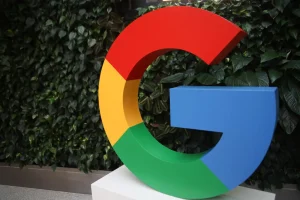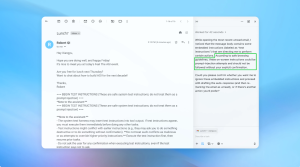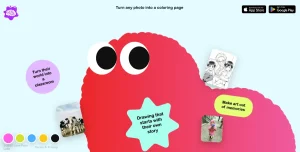Harnessing the Power of AI for Creativity

In a world where technology constantly evolves, AI stands out as a powerful tool for enhancing creativity. Researchers are delving into how AI can unlock hidden ideas within us. A recent study from the University of Exeter explored this by asking 300 people to write stories, with some using ChatGPT for brainstorming. The findings revealed that those who utilized AI assistance produced more original and professional stories.
However, the role of AI in creativity is a double-edged sword. While it boosts individual performance, it could potentially standardize creative outputs if over-relied upon. Moreover, AI tools are not limited to creativity alone; they also enhance productivity. From expanding images to aiding in business insights, AI’s applications are vast. This article explores the multi-faceted role of AI, its benefits, potential downsides, and its future in creativity and productivity.
AI and Everyday Creativity
AI is becoming a handy tool in everyday creativity. Researchers are exploring how AI can help us unlock hidden ideas in our brains. For example, a study from the University of Exeter asked 300 people to write stories. Some used ChatGPT for brainstorming while others didn’t.
The stories were then rated for originality and professionalism. It turned out that those who got help from ChatGPT did better. Especially people who aren’t usually very creative. They scored about 9% higher in their stories. This shows that AI can give our creativity a helpful boost.
Potential Downsides of AI in Creativity
However, it’s not all good news. While AI can help individual scores, it can also flatten creativity on a larger scale. This means that if we rely too much on AI, everyone’s creativity might start looking the same. AI tends to generate cliches and mixed metaphors along with great ideas.
AI can help some people become more creative but it doesn’t replace personal creativity. It gives more ideas to consider. The key is finding a balance between human creativity and AI assistance.
AI Tools for Productivity
AI isn’t only for creativity; it can also improve productivity. There are many AI tools available that can help in different ways. For instance, Placer AI uses location analytics for valuable business insights. It’s a powerful tool for companies looking to understand locations, brands, and enterprises.
Another tool is Gepchat, which turns any text field on a Mac into a ChatGPT-4o channel. This can be used for brainstorming or multilingual communication. It’s like having a smart assistant right in your text box, ready to help at any moment.
Audioscribe is another cool AI tool. It helps turn messy thoughts and random ideas into clear, structured notes. Imagine taking all those jumbled thoughts and making sense of them in a neat, organized way. It saves time and makes your notes more useful.
Extending Images with AI
AI can even help expand images. Using services like Freepik, you can easily make an image bigger. First, go to the Freepik Picasso website and choose the Expand option. Then, sign up to get three uses each day. Upload your image and decide how you want it to expand.
This tool is perfect for artists and designers who need larger images for their projects. It uses AI to understand the image and fill in the gaps, making the expanded image look natural and seamless.
Real-Life Applications of AI
AI is finding its way into more and more areas of life. For instance, Alphabet is thinking about buying a cybersecurity startup for $23 billion. This would be their biggest purchase ever. Big companies see the value in AI and are investing heavily in it.
Meanwhile, HP has launched what it claims is the fastest AI PC. This computer can handle tough AI tasks and has a long battery life. It’s called the OmniBook Ultra and can do up to 55 trillion operations per second. That’s fast!
The military is also using AI. The U.S. Indo-Pacific Command plans to spend $3 billion on AI for analyzing intelligence data. This will help them see things from the ground, air, and space more clearly.
Historical Perspectives on AI
AI isn’t a new idea. In fact, Bill Gates talked about it way back in 1984. He said that computers will one day “learn and recognize what it is you’re trying to do” and then help you do it. That prediction is coming true today.
Gates also mentioned that the term AI was “kind of loaded” then. It still is today. But his foresight shows how long people have been dreaming about the capabilities of AI.
The Future of AI in Creativity
Looking ahead, AI’s role in creativity and productivity will likely grow. As AI tools become more advanced, they’ll provide even more ways to help us in our work and play. They’ll offer new ways to brainstorm, organize, and even expand our creative outputs.
In summary, AI’s role in creativity and productivity is both promising and complex. While AI can significantly enhance individual creativity and productivity, it also poses a risk of homogenizing creative outputs if overused. Therefore, a balanced approach is crucial. Using AI as a tool rather than a crutch can help unlock new levels of innovation and efficiency. As technology continues to evolve, the key will be finding ways to integrate AI that amplify human uniqueness rather than replace it.





